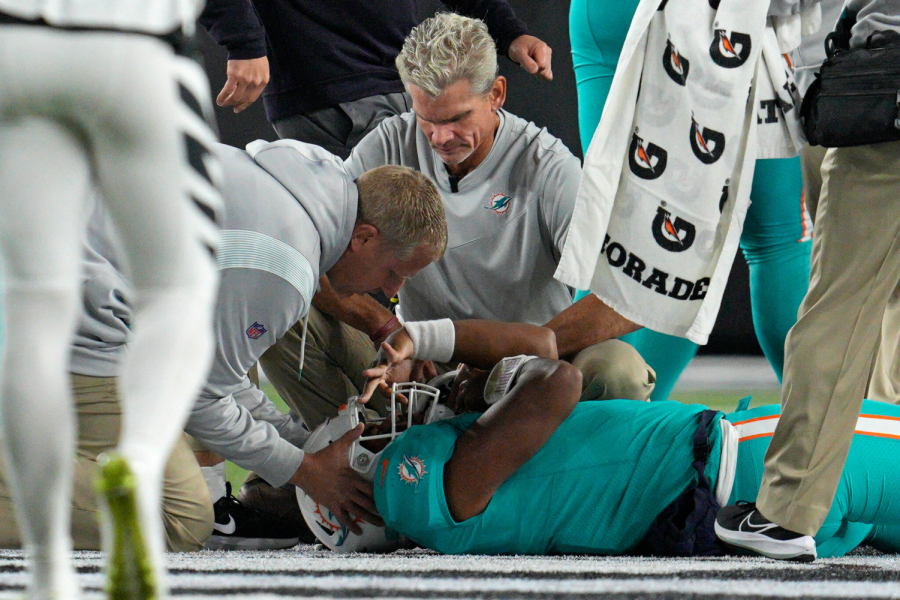NFL Concussion Controversy
October 14, 2022
As RMA’s student-athletes know, sports come with the risk of physical injury. Our coaches and trainers do all they can to prevent problems, but they still sometimes happen, and when they do, it’s imperative that both coaches and teachers do everything they can to support injured athletes. A recent incident in the NFL, however, shows that this concern doesn’t always appear in professional sports, and broadcasters, sports writers, and doctors are weighing in on the subject.
The standard concussion protocol in the NFL can be initiated by anyone on the field who suspects a concussion or observes unusual behavior. The player is immediately removed from the field to undergo a sideline survey by the team physician and a neurological consultant. Depending on the results of the sideline survey, the player either returns to the game or is moved to the locker room for a locker room exam, which goes more in depth. From there, the player may either return to the field or stay in the locker room for periodic evaluations, depending on the results of the locker room exam.
Two weeks ago, Miami Dolphins’ quarterback Tua Tagovailoa was taken out of a game for a head injury after taking a hard hit and struggling to walk after getting up. He was evaluated for a concussion but returned for the second half. Four days later, he took another hard hit to the head, causing his arms to lock in a “fencing” position. This raised major concerns among fans, coaches, doctors, and anyone else who saw the injury and the way Tagovailoa’s arms locked up. The Dolphins’ coaching staff, doctors, and NFL officials were under major fire for not taking control of the situation when the first injury occurred, and some even saying they should lose their jobs over it.
Tagovailoa’s injury has greatly impacted the NFL’s response to the severity of head injuries. The NFL has gone as far as changing their concussion policy. Now, if any player is diagnosed with ataxia (poor muscle control associated with concussions but can appear as slurred speech or unsteadiness), they will not be allowed to return to play. This policy change has already affected players and games: Nyheim Hines, a running back for the Indianapolis Colts, took a hard hit in the first drive of a game just one week after Tagovailoa’s injury and struggled walking to the point of being held up by his teammates until medical personnel arrived. Hines was immediately removed from the game and did not return to the game out of precaution. He underwent all proper concussion protocols and will return when it is deemed safe for him to do so.
These past few weeks in the NFL have shown the importance of concussion protocol and how seriously it needs to be taken in all levels of sports, which RMA will continue to do.

